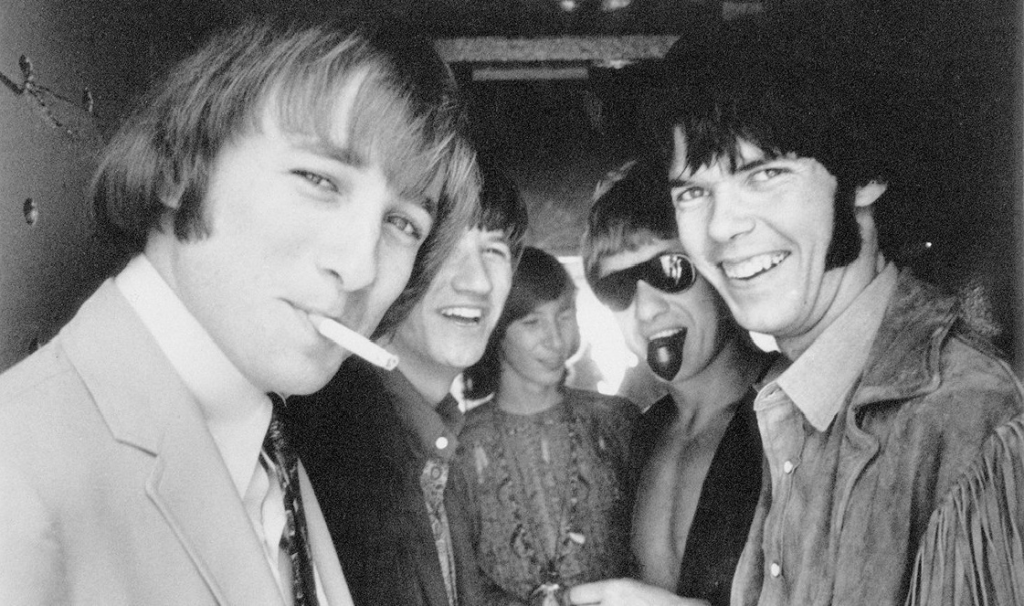
At the dawn of the 1960s, when Bob Dylan's melancholy notes resonated with the political and social concerns of the time, a new musical entity emerged, delicately rooted in psychedelic rock and folk: Buffalo Springfield. A fusion of intricate lyricism and voices as gentle as a summer breeze, Buffalo Springfield has created a sound of breathtaking originality, encrusted with revolutionary thinking that takes us through time and space.

Buffalo Springfield is above all the alliance of five virtuoso musicians: Neil Young, Stephen Stills, Richie Furay, Bruce Palmer and Dewey Martin. This combo gave birth to a band whose name is taken from a brand of steamroller and whose music has well and truly flattened the competition. They managed to forge a unique sound, fusing country, rock, pop and folk, all wrapped up in the carefree, rebellious flavour of their time.

Their most iconic song, “For What It's Worth”, has become an ode to protest and awareness. The song, which evokes the Sunset Strip riots, is an eloquent testament to the social tension that permeated the United States at the time, while offering a surprisingly soothing blend of folk-rock that ripples through the listeners' minds. The biting reverb of the guitar, the nonchalant drums and the almost hypnotic vocals of Stills and Furay form a perfectly balanced backdrop for the song's poignant message.
Despite their premature break-up after only two years and three albums, Buffalo Springfield left an indelible mark on music history. They paved the way for a new generation of folk rock bands, and several of their members went on to shape popular music, including Young and Stills who later joined Crosby, Stills, Nash & Young.
Today, more than half a century after their formation, Buffalo Springfield continues to charm and inspire. Their musical legacy remains a vibrant testament to the cultural and political ferment of the 1960s, their creativity an inexhaustible source of inspiration, and their discography a precious relic that every music lover should explore.
Buffalo Springfield is not just a band, it is a socio-cultural phenomenon, a movement, a revolution in itself. Through their songs, they captured the spirit of an era and a movement that was born in the tumult of the late 1960s.
The Buffalo Springfield Again album
In 1967, in the midst of the socio-political and cultural turmoil of the sixties, Buffalo Springfield released their second album, “Buffalo Springfield Again”. This record, even more innovative and daring than their first effort, cemented the band's status as a leading figure in folk-rock and psychedelic pop.
“Buffalo Springfield Again” is a melting pot of musical genres, with each member of the band bringing his or her unique stamp to the musical mosaic. It shows the incredible diversity of their talents, moving from classic folk-rock to psychedelic experimentation, without ever losing sight of the cohesion of the whole.
The first track, “Mr. Soul”, written and performed by Neil Young, is a rumbling rock'n'roll anthem. Its brutal guitar introduction and Young's poetically disenchanted lyrics set the tone of the album. A disguised critique of celebrity, of the star system that dehumanises the individual, reducing their soul to a commodity.
“Bluebird”, a Stephen Stills composition, is an epic journey of over seven minutes, oscillating between folk and hard rock, and ending with a haunting acoustic jam session. It is here that Stills' genius is truly revealed, combining virtuosity and sensitivity with disconcerting ease.
Other gems on this album include Young's “Expecting to Fly”, which stands out for its cinematic orchestral arrangement. A beautiful, almost dreamlike sonic tableau, and one of the first examples of the successful use of an orchestra in a rock context.
Next comes Richie Furay's “Sad Memory”, a simple and moving acoustic song that demonstrates his ability to write bittersweet ballads with a grace all his own.
And of course, “Broken Arrow”, also by Neil Young, which stands out for its avant-garde sound collage, complex structure and lyrical poetry.
“Buffalo Springfield Again” is thus a musical showcase of great diversity, which pushed the boundaries of psychedelic rock and folk at the time. It set the stage for its members' future sonic explorations, notably with Crosby, Stills, Nash & Young and the solo careers of Stills and Young.
The album remains a staple in the band's discography and in 60s rock in general. Every listen to “Buffalo Springfield Again” is a plunge into a musical universe of breathtaking richness and originality. A timeless classic that continues, again and again, to charm, surprise and inspire.
The song Bluebird
Written and sung by Stephen Stills, “Bluebird” is a seven-minute piece that breaks the conventions of traditional pop. The song unfolds as a musical journey in two parts, starting with a rumbling hard rock and ending with a serene acoustic banjo improvisation.
The opening features a sharp electric guitar, heavy bass and punchy drums. Stills' voice is both smooth and energetic, swinging between almost spoken verses and melodious choruses, carried by perfectly executed vocal harmonies.
The transition to the acoustic part of the song is almost imperceptible, underlining Buffalo Springfield's ability to merge musical styles. The end of “Bluebird” is a sublime and contemplative acoustic ballad, a stark contrast to the aggressive rock opening.
Lyrically, “Bluebird” is a praise of the free spirit, symbolised by the image of the blue bird flying unfettered. The lyrics, tinged with symbolism, invite interpretation and reflection, while maintaining a certain simplicity and poetic beauty.
Stills is a poet of freedom, natural beauty and innocence. He takes a dreamy look at the world, choosing to watch the bluebird rather than be overwhelmed by the vicissitudes of life. There is no judgement, no pretence, only a silent appreciation of the beauty that surrounds us.
Where to listen to Buffalo Springfield Again?
- Listen to Buffalo Springfield Again on Spotify
- Listen to Buffalo Springfield Again on Deezer
- Listen to Buffalo Springfield Again on Youtube